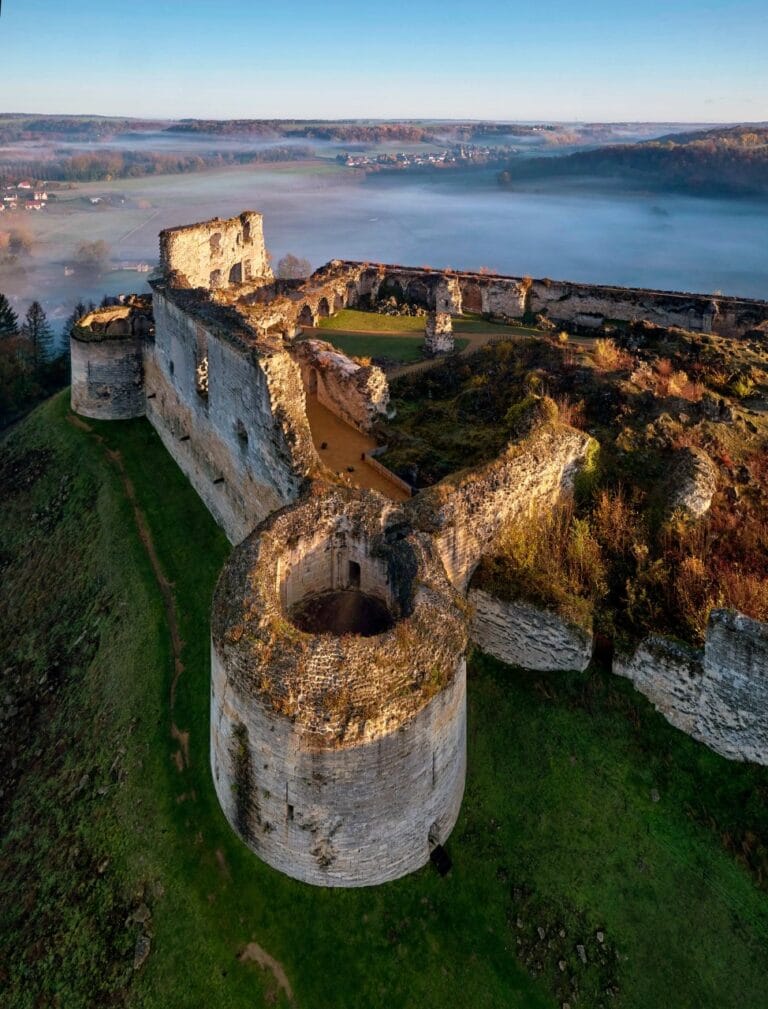Château de Nesles: A Medieval French Castle in Seringes-et-Nesles
Visitor Information
Google Rating: 4.5
Popularity: Low
Google Maps: View on Google Maps
Official Website: www.chateaudenesles.com
Country: France
Civilization: Unclassified
Remains: Military
History
The Château de Nesles is located in the municipality of Seringes-et-Nesles, France. It was established by the medieval French civilization during the early 13th century.
The castle’s origins date back to around 1226 when Robert III de Dreux, known as Gasteblé, a Capetian count of Braine, founded the fortified residence. Its construction was permitted by Thibaud de Champagne, who aimed to replicate the design principles of the Château de Dourdan, a royal fortress built earlier by King Philip Augustus. This initiative reflected the period’s interest in strong defensive structures built with symmetry and strategic layouts.
Ownership of the castle transitioned through marriage to Gaucher de Châtillon, an influential figure serving as constable of France and lord of Fère-en-Tardenois. The Châtillon family retained control until approximately 1370. Subsequently, Jehan de La Personne, viscount of Acy and Aulnay, acquired the château. A prosperous lord and former comrade-in-arms of the famed military leader Du Guesclin, La Personne held prestigious positions including seneschal of Poitou and the first captain of the Bastille Saint-Antoine in 1385.
During the early 15th century, the castle became a contested site amidst ongoing conflicts. Between 1421 and 1423, it endured a siege that ultimately led to its capture by English forces under a treaty arrangement. In 1436, the château entered the possession of Guillaume de Flavy through marriage. Flavy had served as captain of Compiègne and was notably accused of betraying Joan of Arc during her capture. During his tenure, he held Marshal Pierre de Rieux prisoner within the castle; the marshal died there in 1439 after more than a year of confinement.
A dramatic episode unfolded in 1449 when Guillaume de Flavy was murdered on the first floor of the main tower by his wife. She faced a brief period of imprisonment following the act, then married her accomplice, Pierre de Louvain. The latter was later killed by Flavy’s brothers. Her subsequent marriage to Pierre Puy, a counselor at the Paris parliament, marks the complex and turbulent narrative linked to the castle’s noble residents.
The château’s fortifications, including its walls, towers, and keep, have been officially recognized and protected as historic monuments since May 29, 1922, preserving its legacy for future generations.
Remains
The Château de Nesles closely follows the architectural layout of the Château de Dourdan, reflecting a style favored during the reign of Philip Augustus. This style emphasizes balance, order, and carefully planned defensive features, creating a stronghold designed for both protection and control.
At the core of the structure is a quadrangular enclosure fortified by eight towers, all of equal size, forming a robust perimeter. In the northeast corner stands a large, separate cylindrical keep, often referred to as a donjon, serving as the strongest point of defense and refuge.
Among the most prominent surviving elements is the main tower, rising approximately 30 meters high. Its walls, built thickly to a depth of about five meters, demonstrate the emphasis on creating a formidable defense against attackers. The entrance to the château is located in the northern curtain wall, positioned strategically between two of the perimeter towers to control access.
Today, the preserved sections include the curtain walls that connect the towers, the towers themselves, and the donjon. Farm buildings within the enclosure are present but were not included in the historic monument designation, indicating that the protected ruins focus on the medieval fortifications that define the château’s original defensive character.










